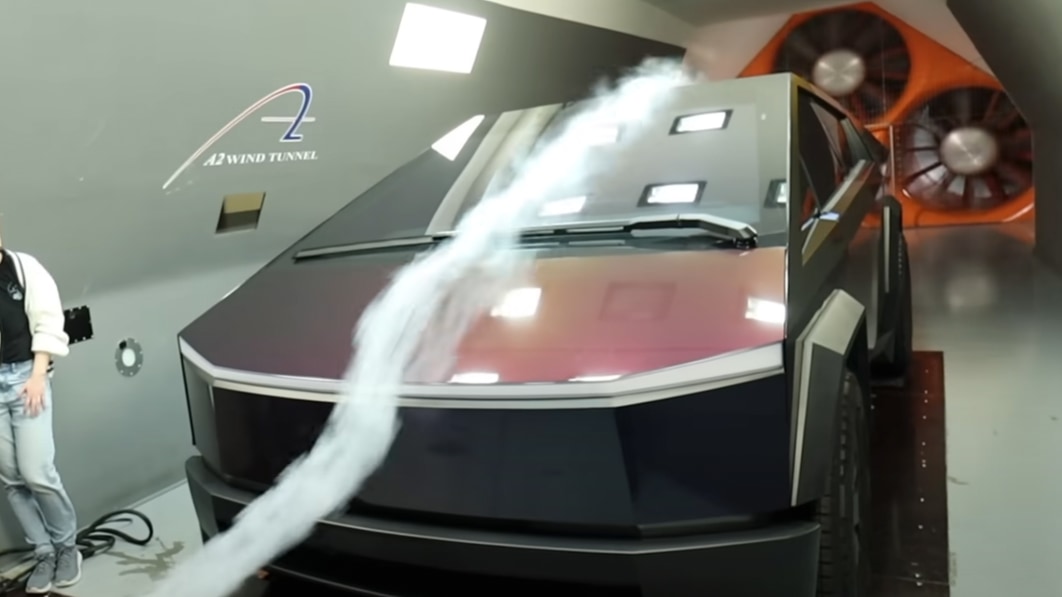Tesla and CEO Elon Musk have made some wild claims about the Cybertruck, including that it might be able to function as a boat. While the truck’s newness has made fact-checking some claims nearly impossible, one YouTube channel recently put one of the automaker’s statements to the test. In mid-March, the i1 Tesla YouTube channel tested the Cybertruck in a wind tunnel to determine whether Tesla’s claim of a 0.34 drag coefficient (Cd) is accurate, and it appears the company’s numbers aren’t that far from the truth.
The channel took their truck to the A2 Wind Tunnel in North Carolina, where they test all manner of race cars and other vehicles. As InsideEVs noted, the Cybertruck is one of the largest vehicles tested in the company’s wind tunnel to date.
While many of Tesla’s claims feel outlandish, the promise of a 0.34 drag coefficient is close to what the i1 Tesla crew discovered in the wind tunnel. Their testing revealed a drag coefficient of 0.384, which was slightly less aerodynamic than the automaker had promised.
That said, the channel noted that every wind tunnel is different, making it difficult to have an apples-to-apples comparison with Tesla’s figures. They also acknowledged their truck’s wrap, saying that it did not impact the numbers because the exterior texture and shape hadn’t changed. The team performed other tests, finding that the Cybertruck’s worst performance in the wind tunnel came when it was placed in the Extract (highest suspension setting) drive mode, where it saw a 0.535 Cd.
Tesla’s claims and the YouTubers’ findings place the Cybertruck in the better half of electric pickups for aerodynamics. The Ford F-150 Lightning and brick-wall-shaped GMC Hummer EV Pickup both performed worse, with drag coefficients of 0.44 and 0.50, respectively. Chevy claims a 0.33 for the Silverado EV, and Rivian notes a 0.30 for the R1T.


